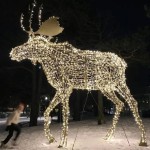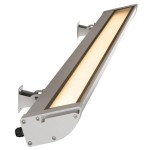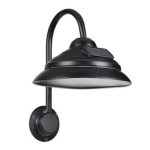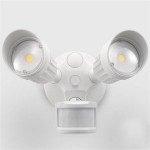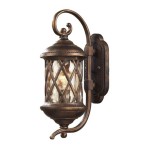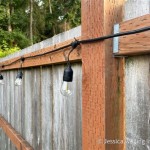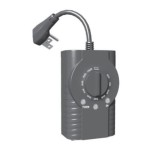Best Outdoor Barn Lighting Fixtures: A Comprehensive Guide
Outdoor barn lighting is a critical element of farm and ranch operations, offering security, safety, and functionality after sunset. Choosing the optimal lighting fixtures requires careful consideration of several factors, including the size of the barn, the specific tasks performed within and around the structure, energy efficiency, and resistance to weather conditions. This article explores various outdoor barn lighting options, evaluating their strengths and weaknesses to aid in selecting the most suitable fixtures for individual needs.
The purpose of outdoor barn lighting extends beyond mere illumination. Well-placed and adequately bright lights deter potential intruders, both human and animal. Clear visibility is essential for performing tasks such as feeding livestock, repairing equipment, and navigating the property safely during inclement weather. Furthermore, proper lighting can significantly reduce the risk of accidents, especially in areas with uneven terrain or potential hazards.
Understanding Lighting Needs Specific to Barn Environments
Barn environments present unique challenges for lighting systems. These structures are often located in remote areas with limited access to natural light. Dust, moisture, and extreme temperatures are common, requiring fixtures that can withstand these conditions. Moreover, electrical systems in older barns may not be equipped to handle high-wattage incandescent bulbs, necessitating energy-efficient alternatives. Evaluating these specific needs is the first step in selecting the right lighting fixtures.
The size of the barn is a primary determinant of the number and type of fixtures needed. Larger barns require more fixtures to ensure adequate illumination throughout the interior and exterior. The height of the barn ceiling or eaves also influences the type of fixture and its mounting location. Higher ceilings necessitate lights with a wider beam angle to effectively illuminate the ground below. For smaller barns, a few strategically placed lights may suffice.
The specific activities conducted within and around the barn should also dictate the type of lighting. Areas used for livestock handling require brighter, more uniform light to ensure the safety of both animals and handlers. Storage areas may benefit from motion-activated lights to save energy and deter pests. Furthermore, access points and pathways should be well-lit to prevent accidents and facilitate navigation after dark.
Energy efficiency is a crucial consideration for barn lighting, particularly given the potential for lights to be left on for extended periods. Traditional incandescent bulbs are highly inefficient, converting most of their energy into heat rather than light. Modern alternatives, such as light-emitting diodes (LEDs) and compact fluorescent lamps (CFLs), offer significantly improved energy efficiency, reducing electricity consumption and lowering operating costs. Although the initial cost of these alternatives may be higher, their long lifespan and energy savings make them a cost-effective choice in the long run.
Resistance to weather conditions is another critical factor. Outdoor barn lighting fixtures must be able to withstand rain, snow, wind, and extreme temperatures. Fixtures should be rated for outdoor use and constructed from durable materials that are resistant to corrosion and degradation. Look for fixtures with a high Ingress Protection (IP) rating, which indicates the level of protection against dust and water ingress. Fixtures with a rating of IP65 or higher are generally suitable for outdoor barn applications.
Types of Outdoor Barn Lighting Fixtures
A variety of lighting fixtures are available for outdoor barn applications, each with its own advantages and disadvantages. Some common types include floodlights, spotlights, wall packs, and dusk-to-dawn lights. The choice of fixture depends on the specific lighting needs and the area to be illuminated.
Floodlights are widely used for general-purpose outdoor lighting. They provide a broad, even distribution of light, making them ideal for illuminating large areas, such as barnyards, driveways, and parking areas. Floodlights are typically mounted on poles, walls, or eaves and can be adjusted to direct the light where it is needed most. They are available in a range of wattages and light outputs, allowing for customization based on the size of the area to be illuminated.
Spotlights provide a more focused beam of light, making them suitable for highlighting specific features or areas of interest. They can be used to illuminate signage, landscape features, or security-sensitive areas. Spotlights are often adjustable, allowing for precise aiming and control of the light beam. They are typically smaller and less powerful than floodlights, but they can be very effective for targeted lighting applications.
Wall packs are designed to be mounted on walls and provide a wide, downward-directed light distribution. They are commonly used to illuminate walkways, entrances, and building perimeters. Wall packs are available in a variety of styles and wattages, and they can be equipped with motion sensors or photocells for automatic operation. Their compact design and easy installation make them a popular choice for many outdoor lighting applications.
Dusk-to-dawn lights automatically turn on at dusk and off at dawn, providing continuous illumination without the need for manual switching. They are ideal for security lighting and for illuminating areas that require constant visibility. Dusk-to-dawn lights typically use a photocell to detect ambient light levels and automatically activate the light when it gets dark. They are available in a range of styles and wattages, and they can be equipped with energy-efficient LED or CFL bulbs.
Beyond these common types, other specialized lighting options exist. String lights, while primarily decorative, can provide ambient lighting for outdoor gatherings or events. Solar-powered lights offer an energy-efficient and eco-friendly alternative, especially for areas where electrical access is limited. Emergency lighting systems, equipped with battery backups, can provide illumination during power outages, ensuring safety and security in critical situations.
Key Considerations for Installation and Maintenance
Proper installation and maintenance are essential for ensuring the longevity and performance of outdoor barn lighting fixtures. Incorrect installation can lead to electrical hazards, reduced light output, and premature failure of the fixtures. Regular maintenance, such as cleaning and bulb replacement, can help to maintain optimal performance and extend the lifespan of the lighting system.
Installation should be performed by a qualified electrician to ensure compliance with local electrical codes and safety regulations. Wiring should be properly grounded and protected from the elements. Fixtures should be securely mounted to prevent them from falling or being damaged by wind or other environmental factors. It is important to follow the manufacturer's instructions carefully during installation.
Regular cleaning is necessary to remove dust, dirt, and debris that can accumulate on the lenses and reflectors of the fixtures. This buildup can significantly reduce light output and affect the overall effectiveness of the lighting system. Use a soft cloth and mild detergent to clean the fixtures, avoiding harsh chemicals or abrasive cleaners that could damage the surfaces.
Bulb replacement should be performed as needed to maintain optimal light output. When replacing bulbs, be sure to use the correct type and wattage recommended by the manufacturer. LED and CFL bulbs have a much longer lifespan than traditional incandescent bulbs, but they will eventually need to be replaced. Disposing of old bulbs properly is crucial, especially for CFLs, which contain mercury. Check with local authorities for recycling programs.
In addition to routine maintenance, it is important to inspect the lighting system periodically for any signs of damage or wear. Check for loose wiring, corroded connections, and cracked or broken lenses. Address any issues promptly to prevent further damage and ensure the continued safety and reliability of the lighting system. Furthermore, consider utilizing timers, motion sensors, and dimmers to further optimize energy usage and extend the lifespan of the fixtures. These controls allow for automated operation and the ability to adjust light levels based on specific needs, resulting in both energy savings and enhanced functionality.

Choosing The Best Barn Lights For Your Modern Farmhouse Anderson Grant

American Made Indoor Outdoor Barn Lights Steel Lighting Co

Choosing The Best Barn Lights For Your Modern Farmhouse Anderson Grant

Gooseneck Barn Light Adds Style To Industrial Pole Inspiration Electric

Choosing The Best Barn Lights For Your Modern Farmhouse Anderson Grant

Choosing The Best Barn Lights For Your Modern Farmhouse Anderson Grant

American Made Indoor Outdoor Barn Lights Steel Lighting Co

Dusk To Dawn Outdoor Light Fixture A Large Classic Barn With Black Sand Finish And Gooseneck Shape This Porch Is Best Suited For Home S Patio Or Front Door Pack

Galvanized Led Barn Lighting Combines Best Of Style Efficiency Inspiration Light Electric

Choosing The Best Barn Lights For Your Modern Farmhouse Anderson Grant
Related Posts
